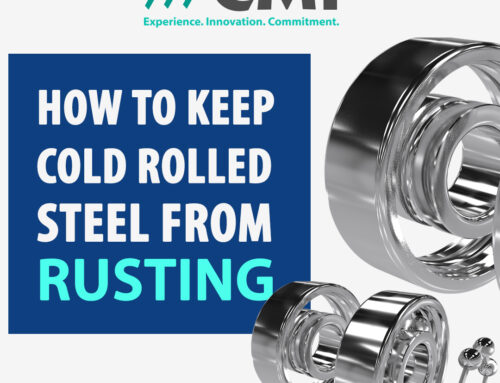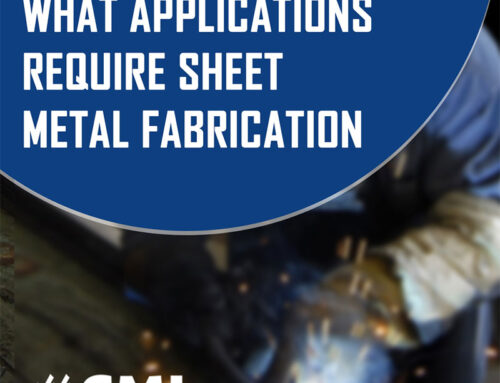Steel, a carbon-added version of iron, is frequently alloyed with other elements to prepare it for processing and industrial application. Cold rolling, a popular procedure for preparing steel for use, produces Cold Rolled Steel.
What Exactly Is Cold-Rolled Steel?
” Cold Rolling” is the process where the low carbon steel is rolled at nearly normal room temperature. Cold-rolled steel is superior in terms of machinability and strength. Cold-rolled steel sheets are frequently used in designing items that require coated surfaces, straightness, concentricity, and strict tolerances.
The word “cold rolled” refers to the product name of the flat-rolled sheet and coil products.
Cold-rolled steel is manufactured in cold reduction mills, where the material is cooled to near room temperature before annealing and/or tempers rolling. Compared to hot-rolled steel, this technique provides the steel with a wide range of straightness, improved tolerances, and surface finishes. Cold-rolled steel is softer than hot-rolled steel after annealing due to its low carbon content. This steel is frequently produced in the form of rods, bars, strips, and sheets. Cold-rolled items are often smaller in size than their hot-rolled counterparts.
Skin rolled, quarter-hard, half-hard, and full-hard cold-rolled steel strips and sheets are available. Skin-rolled steel stock is typically used in subsequent cold-working methods when good ductility is required. The full-hard rolling will decrease the thickness to about half, whereas the others are thicker. There are different reasons for the different types. Should you want to know more, give us a call and speak with one of our representatives.
Cold-rolled steel is used in a wide range of products, including domestic appliances such as washing machines and refrigerators, as well as construction-related products, architectural components, automobiles, and industrial gear. Cold-rolled steel is an essential element in today’s civilization. Corrosion resistance is exhibited by cold-rolled steel.

Unique Properties of Cold Rolled Steel
Cold Rolled Steel, often called CR or CRS, is recognized for its ductility. It is well known for its non-creeping and non-shrinking at room temperature properties and is also formable for moderate draw applications.
Typically, you’ll discover information regarding this steel compared to hot-rolled steel. While hot-rolled steel is used in situations where precise shapes and tolerances are not required (such as railroad tracks and I-beams), cold-rolled steel is noted for its ability to preserve minimal surface flaws and hold tight tolerances.
What is Cold Rolled Steel Used For?
Cold-rolled steel is perfect for jobs requiring precision. For moderate draw applications, the metal is easily formable.
This makes it suitable for use in a wide range of metal furnishings and household appliances. For example, this metal is widely used in school lockers and filing cabinets. It is also popular building material for garages, industrial structures, and steel sheds. Let’s look at some of the other applications that use cold-rolled steel.
Hand Tools
Cold rolled steel is an excellent choice for hand and machine tools such as drill bits and dies. This steel’s properties include high material hardness, which makes it resistant to flattening and deformation. It also is abrasion and erosion resistant, offers good breaking resistance, and has high toughness.
Industry of Construction
Cold-rolled steel has been in high demand in the building industry, particularly for framing applications. Cold-rolled steel framing is both stronger and lighter than competitive alternatives. Cold-formed steel framing has recently been the material of choice for multi-housing buildings such as assisted living facilities, motels, and dorms.
Household
Cold rolled steel is suited for usage in household appliances and furnishings. Lighting fixtures are often made using cold-roll steel because of its amazing properties. This steel performs exceptionally well in applications requiring high precision. Cold rolled steel is a great option in home decor because it lends itself well to various surface finishes, colors, and designs.
What is the first thing that comes to mind when you think about steel? Many people’s thoughts turn to construction, where steel beams are the basis of skyscrapers. Others may recall the car sector, where steel may account for up to 60% of a vehicle’s total weight. The truth is that steel, in some shape or another, is all around us most of the time. In our homes, our structures, and even our vehicles.
Architecture and Home Decor Materials
Yes, steel has long been a popular material for both architectural and home design. Cold rolled steel, in particular, is widely used to make home design elements such as brackets, lamp fittings, and appliance components.

Light Fixtures Made of Cold Rolled Steel
When you walk into a home furnishings store, you’re likely to see lighting fixtures made of various materials. This could be due to aesthetic differences: an aluminum, copper, or brass light fixture will look different than one made of cold-rolled steel. But looks aren’t the only distinction.
Aluminum is used because of its high strength-to-weight ratio and stampability. It is also less expensive than other materials. Copper is an ideal choice for internal lighting components due to its superior electrical conductivity and thermal properties. Brass, for example, has numerous desirable properties, such as surface uniformity, corrosion, and suppleness. These are desirable traits needed for light fixtures.
Cold-rolled steel’s many great properties make it great for the lighting fixture industry. As previously stated, cold-rolled steel performs exceptionally well in situations requiring high precision. Cold rolled steel keeps tolerances exceedingly well and has better tensile and yield strengths than ordinary steel. Finally, cold-rolled steel is compatible with a wide range of surface finishes, providing a level of adaptability appropriate in home decor.
Home Appliances and Cold Rolled Steel
Even when it isn’t utilized in home decor, it’s difficult to find a home that doesn’t have some type of cold-rolled steel. This durable material is used in nearly all home appliances as parts and components. Refrigerators, Washers and dryers, and some microwaves are examples of cold-rolled steel appliances. It is also found in water heaters, lawnmowers, and computer hardware.
We have come to rely on cold-rolled steel, whether used as a decorative feature or to form the inside components of the appliances we use daily. Cold-rolled steel is 100% recyclable. It accepts various surface treatments with ease and is known for its ability to retain tight tolerance.
Cold-rolled steel has a nearly 20% increase in strength over hot-rolled steel due to the application of strain hardening. Because the process is carried out at room temperature, the steel does not shrink as it cools as it does in the hot-rolled method.
When aesthetics and visual appeal are important in your project, the outside finish of cold-rolled steel is highly desirable.
Can a Cold Rolling Mill Benefit Metals Other Than Steel?
Though steel is the most commonly used material for cold rolling, numerous alloys and metals can be cold rolled to modify their crystalline constitution. Permanent flaws occur when they are rolled at temperatures below their re-crystallization point. These flaws decrease the crystals’ ability to move within the metal’s structure, increasing the metal’s hardness and tensile strength.
Cold rolled metals include stainless steel, nickel alloys, aluminum, and titanium. Although cold rolling metals, such as stainless steel coil, increase the metal’s surface smoothness and strength, it decreases its ductility. The same holds true for cold-drawn or rolled metal wire. However, once the metal has been annealed, it can be used in a variety of ways.
Do I Need Hot or Cold Rolled Steel?
If you need substantial structural components, the hot-rolled steel technique will most likely be required. The cold-rolled steel method is ideal for tiny pieces that require greater precision and durability. If you have any concerns about which mill process is best for your project, give us a call, we would be happy to help.







![Ballistic Materials: All You Need To Know [2022]](https://custommaterials.com/wp-content/uploads/2022/05/featured-image-Balistic-Materials-500x383.jpg?x26279)